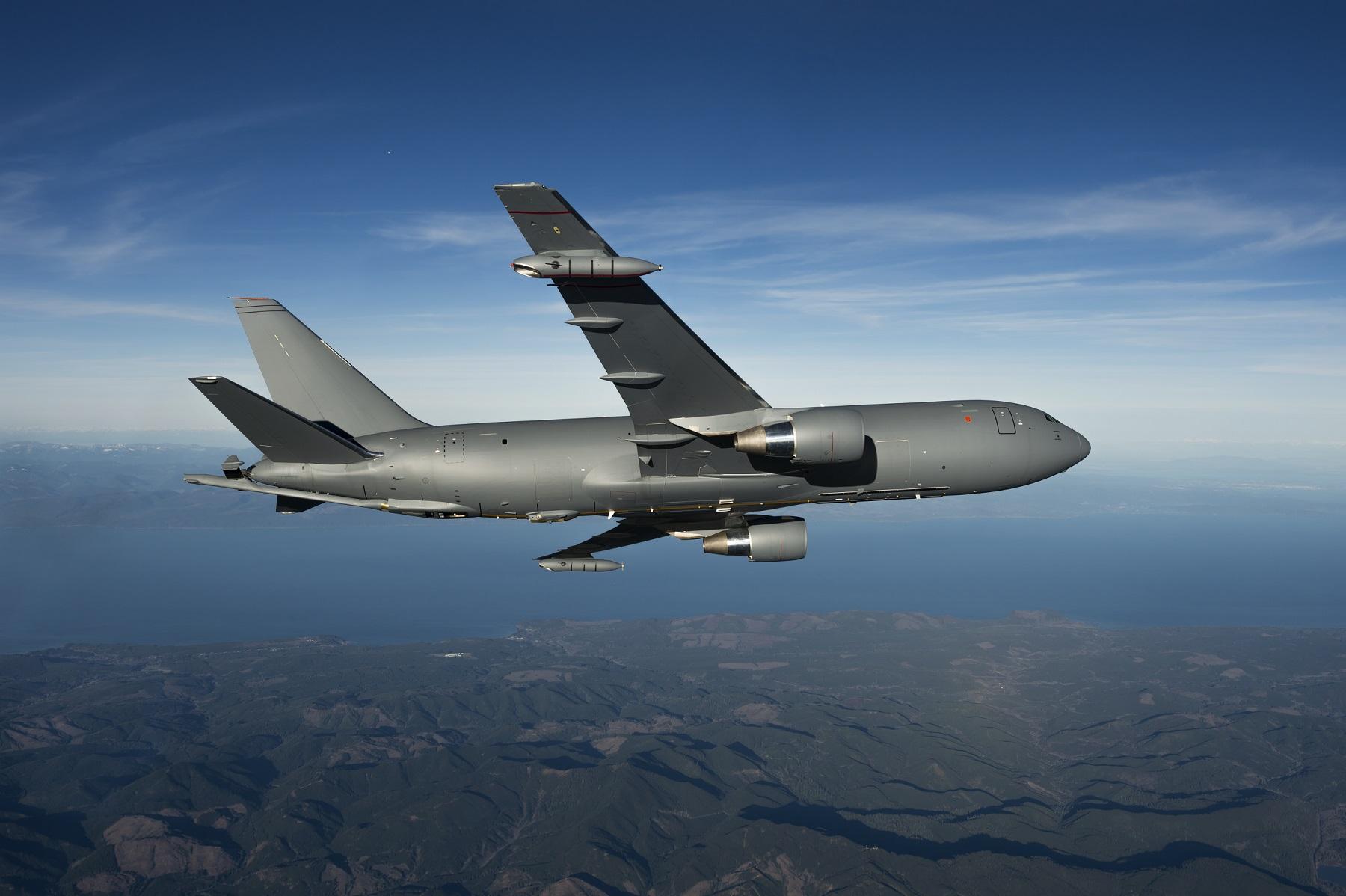
The U.S. Air Force and Boeing have finalized a deal on a dramatically redesigned version of the KC-46A Pegasus tanker’s problem-plagued Remote Vision System (RVS).
In addition, due to a change in cash flow policy prompted by the novel coronavirus pandemic, the Air Force has decided to release $882 million of withheld funds to tie up the negotiations and ease Boeing’s burden.
The government and Boeing signed off on two separate memorandums of agreement—the first on the redesigned RVS, which the service is dubbing RVS 2.0, and the second on releasing the $882 million, which had been withheld because of the contractor’s poor performance.
“Our teams were able to negotiate those two memorandums simultaneously,” Air Force acquisition executive Will Roper told reporters April 2. “Of course, releasing cash, it’s $882 million. It’s a significant size but so is the scope of the work for RVS 2.0. We’re talking about a major overhaul.”
Roper said the KC-46 team employed “creative thinking under fire” to nail down the deal.
RVS 2.0
Every facet of the RVS will be altered. The new system will be outfitted with modern, 4K, high-definition cameras, with a fiber-optic cable running imagery from the cameras to larger, 4K color displays for the operators, Roper said.
“Right now, the cameras are slanted, which creates that warping... We’ll remove that, which will make the image that the operator sees the same as the reality outside of the tanker, so no more warping or rubber sheeting,” he said.
Additionally, the new system will incorporate a “laser ranger LIDAR” where the camera box resides that will paint the aircraft that approaches the tanker and the boom, he said.
“We think that will help significantly with them understanding their distance to go because LIDARs are extremely accurate,” Roper said. “They’ll be seeing both the boom and the aircraft in the same reference frame, which means there will be no bias term that would translate into an additional error.”
Another new aspect of the system will enable the KC-46 to tank autonomously or semi-autonomously. This capability has been on the service’s roadmap for years and the government agrees it is the future of tanking and mobility, Roper said.
“This is going to bring that future about much faster,” he said. “I couldn’t be happier with the design that we have, I couldn’t be happier with the team that helped pull it together, and I think we’re turning a corner and starting a new chapter in KC-46.”
RVS 1.5
The new deal does not close the door to RVS 1.5, which is what the service and Boeing analyzed at the end of last year. This iteration of RVS implements numerous software changes and a few hardware updates.
“We have told Boeing that we will analyze that design when it’s complete,” Roper said. “If there’s operational benefit to deploying it across our fleet, then we’ll be open to doing so, but the data has to lead us to that decision.”
The program anticipates kicking off flight testing of RVS 1.5 this summer, and having it ready for fielding on fleet and production aircraft in the second half of 2021, Jamie Burgess, KC-46 program manager and vice president at Boeing, told reporters April 2.
For the RVS 2.0 technology refresh and associated upgrades, testing will begin in 2020 and be ready for fielding in the second half of 2023, he said.
“It’s a two-phased approach and we are very, very proud of the capability this will bring to the aerial refueling warfighter,” Burgess said.






Comments
Is this the Air Forces definition of 'contractor incentivisation'.